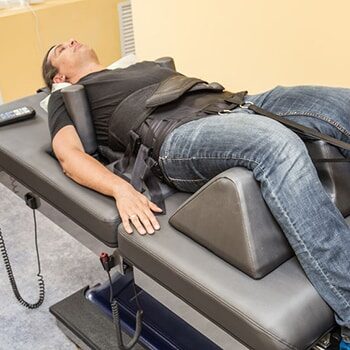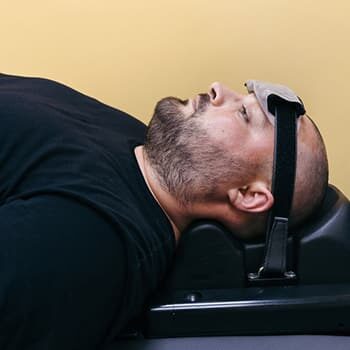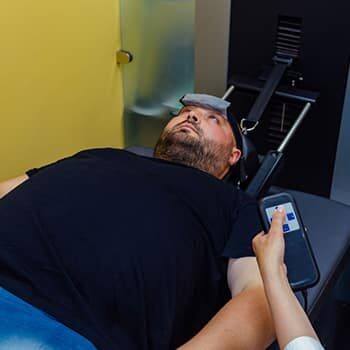
Spinal Decompression

Back Pain Symptoms & Complicating Factors
Approximately 70% of the population at one time in their life will suffer from lower back pain. Even more unfortunate is that up to 40% of those persons will have chronic or reoccurring lower back pain. Multiple episodes of lower back pain can lead to herniation of the disc(s), arthritis, and possible spinal narrowing. Of course, this happens over time just like plaque building on your arteries.
Eventually though, the symptoms worsen and can no longer be ignored. Most patients with this condition come to our offices in pain with those symptoms referring down their leg(s) or even weakness in the legs. Once we verify your condition through evaluation and diagnostic imaging, a treatment protocol for Spinal Decompression therapy will be recommended.
Complicating factors effecting treatment and recovery can include: the number of years the symptoms have persisted, the amount of previous treatment or intervention, and the physical requirements of your day. The amount of narrowing where the nerves come out also determines the amount of pressure on the nerves. Conservative care is always were we begin treatment, but a few of these cases may need surgical intervention. Fortunately, spinal decompression therapy ends up being one of the most effective treatments to decrease the pain and suffering in these patients.
So, What Exactly is SD Therapy?
SD therapy is a form of mechanical traction that applies a force on an intermittent schedule. The time it takes to reach the full pulling force is called the Ramp time. The Hold time is the time the force is held before it releases and ramps downward to a lesser force, but not completely to zero. The typical lumbar spine protocol for a 200-pound individual would be: 90-100 pounds of force; 30 second ramp time, 1 min. - 30 second hold time; 15-30 second rest time at 25-50% of holding force. The full treatment time ranges from 15-30 minutes.
Spinal decompression can be applied to the lumbar or cervical spinal regions. The cervical spine does not require as much force since the neck is smaller in structure and the muscular structure is less dense. The typical protocol for the cervical spine requires anywhere from 12 to 30 pounds of force depending on the patient for a treatment time of 15-20 minutes.
When you are being treated on the spinal decompression, you will feel a gentle pulling on the area being treated. The weight is calibrated based on your level of pain. The more the pain, the slower we have to start. Once the treatment session is ended, one of our therapy assistants will help you off the table. You may feel some soreness following the treatment, which should last no longer than a few hours. If it last for longer than that it means we may have to go up more slowly or stay at the same level for a while.


Will Spinal Decompression Relieve My Back Pain?
The following few days you should feel some relief of the pressure and pain. Each therapy session will build on the previous session, meaning your progression should provide some relief and movement. Most treatment protocols are 4-8 weeks in duration depending on the spinal region, patients age, and the diagnosis being treated. If you are not getting better, you are always encouraged to inform the doctor or staff of the issue.
Spinal decompression has helped many patients over the last few decades avoid surgical intervention and live a normal healthy life. If you are interested in finding out if you are a candidate for this therapy, contact the offices at Brandon 813-654-5413 or Riverview 813-488-6315 to schedule an appointment with one of our doctors.
Patient Feedback:
Spinal Decompression Treatment Action Steps
2. Get Adjusted
Based on your circumstances, a specific treatment plan will be implemented to correct your spine.
